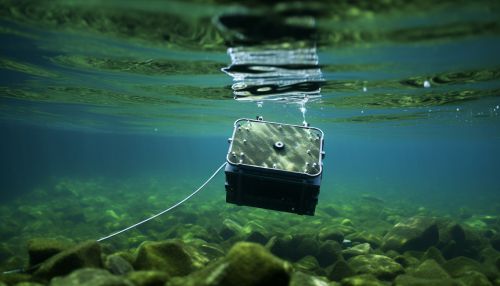Sediment microbial fuel cell
Introduction
A sediment microbial fuel cell (SMFC) is a type of MFC that uses the organic matter found in sediments as a source of energy. This process is facilitated by the metabolic activities of microorganisms present in the sediment. SMFCs are a promising technology for sustainable energy production and have potential applications in a variety of fields, including wastewater treatment, bioremediation, and bioenergy production.


Principles of Operation
The operation of an SMFC is based on the ability of certain microorganisms, known as electroactive bacteria, to transfer electrons to an external electrode. These bacteria, which include species such as Geobacter and Shewanella, are capable of oxidizing organic matter and transferring the resulting electrons to an anode. This process is known as exoelectrogenesis.
The anode, which is typically buried in the sediment, serves as the electron acceptor. The electrons are then transported through an external circuit to the cathode, which is located above the sediment-water interface. At the cathode, the electrons combine with oxygen and protons to form water, completing the circuit.
Design and Construction
The design of an SMFC is relatively simple and can be constructed using readily available materials. The main components of an SMFC are the anode, cathode, and external circuit.
The anode is typically made of a conductive material, such as graphite or stainless steel, and is buried in the sediment. The cathode is usually made of the same material as the anode and is placed above the sediment-water interface. The external circuit connects the anode and cathode and includes a load resistor to measure the current.
The performance of an SMFC can be influenced by several factors, including the type of sediment, the species of electroactive bacteria present, the design of the anode and cathode, and the distance between the anode and cathode.
Applications
SMFCs have a wide range of potential applications, particularly in areas where there is a need for sustainable and low-cost energy production.
One of the main applications of SMFCs is in the treatment of wastewater. The organic matter present in wastewater can be used as a source of energy by the electroactive bacteria in the SMFC, thereby reducing the amount of organic matter in the wastewater and producing electricity at the same time.
SMFCs can also be used for bioremediation, a process that uses microorganisms to degrade or transform harmful substances in the environment. In the case of SMFCs, the electroactive bacteria can oxidize organic pollutants, converting them into harmless substances and generating electricity in the process.
Another potential application of SMFCs is in bioenergy production. By using organic waste as a source of energy, SMFCs can produce bioelectricity, a form of renewable energy.
Challenges and Future Directions
Despite the potential benefits of SMFCs, there are several challenges that need to be addressed before they can be widely adopted. These include the relatively low power output of SMFCs, the need for a better understanding of the microbial communities involved in electricity generation, and the development of more efficient and cost-effective materials for the anode and cathode.
Future research in SMFCs is likely to focus on improving the power output and efficiency of SMFCs, exploring new applications, and developing a better understanding of the microbial communities involved in electricity generation.
